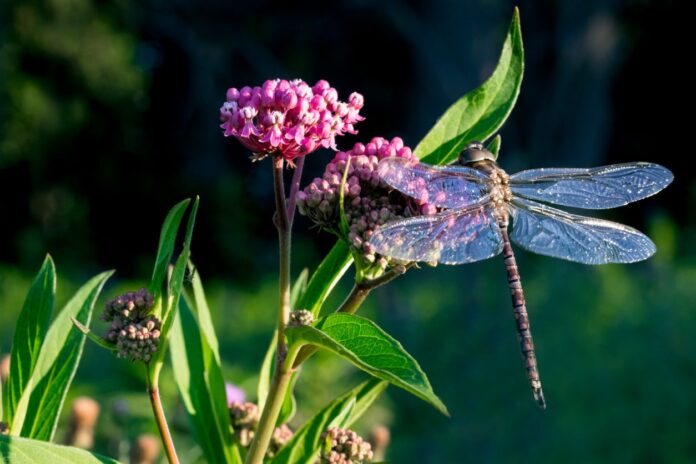Dragonflies are gorgeous insects; they are predatory and flying insects belonging to the order Odonata Infraorder Anisoptera. The Adult dragonflies are lonely survivors they can be easily identified by the pair of large multifaceted compound eyes, two pairs of strong parent wings, and elongated bodies with coloured patches on the body. They have different coloured patches on the body, and about 3,000 extant species of true dragonflies are known. Due to abolishing wetlands, the population of dragonflies is in danger.
Dragonflies are extremely fast and masters in creating accurate aerial ambushes they can fly in any direction and can hover over their prey. They are strong fliers. They make an extraordinary journey of around 18000 km to complete the migration; they migrate from India across the Indian Ocean to East Africa in autumn, which is a non-stop migratory flight. They have distinctive wide balled eyes on their head and are able to get 360° vision, they have a large wing span of about 16 cm; the muscles of dragonflies must be warm to function perfectly but if it is cool they engage in wings whirring and basking in sun to generate heat before taking flight.
Dragonflies can sustain anywhere they can be found in fields, forests and cities also. They are lonely creatures and return to the water for mating and laying eggs. They look for stagnant water or water that has very little movement, eggs hatch in a few weeks and the nymph hatches out and lives underwater for years in this stage until they are mature enough to molt into adulthood.
What do dragonflies eat
They are Carnivorous insects that completely depend on the meat of Insects. Dragonflies are fast-flying insects, quick to catch their prey in mid-air. It uses its long legs to capture its prey. They can eat insects such as flies, midges, and mosquitoes; they also prey on flies, bees, beetles, moths, butterflies and other insects. The larger the size of the dragonfly larger is its diet any dragonfly can eat 15% of its body weight. Adult dragonfly uses three techniques to capture their prey are listed below:
Hawking
It’s the technique applied by most dragonflies to capture their prey in flight; they pluck live insects right out of the air. They’re well equipped for pursuing and capturing flying prey. Dragonflies can move in any direction and can, hover in place and even fly backwards. By forming a basket with its legs, a dragonfly can overtake a fly or bee and simply scoop it up and pop it into its mouth without stopping. Some, like darners and spread wings, will just open their mouths and swallow whatever they catch as they fly. Dragonflies that use hawking to catch their prey include darners, emeralds, gliders, and saddlebags.
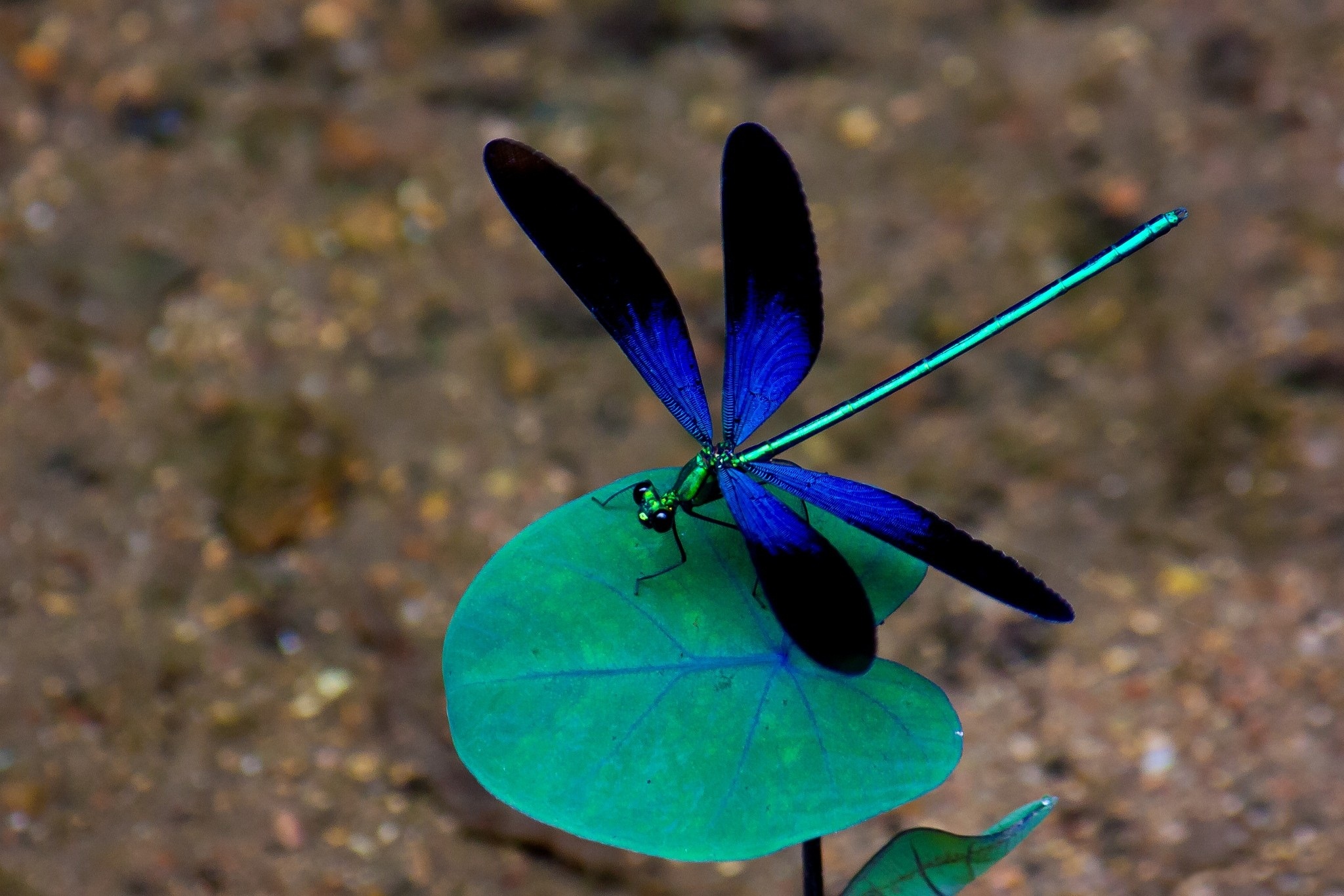
Sallying
Under this technique, dragonflies will sit and watch for prey, and then rapidly sally forth to capture it as it passes by. Salliers include skimmers, clubtails, dancers, spread wings, and broad-winged damsels.
Gleaning
Some dragonflies follow the strategy called gleaning, preferring to hover over vegetation and catch insects perching on plant leaves or stems. Young dragonfly adults, which often hunt in forested environments, will grab and eat caterpillars suspended from the trees by silken threads.
Immature dragonflies are nymphs that live in water and feed on live prey they hangout on the aquatic vegetation, and when the prey that is any small animal, is near the nymph, it unfurls its mouth part that is labium to capture its prey, it can eat mosquitos, tadpoles, beetles, mosquitoes larvae or worms. The Jaws of dragonflies are very flexible and have hooks that help them to catch their food.
What do dragonflies eat, well and the agility of dragonflies allow them to catch prey mid-air they form a type of basket with legs to scoop a bug and put it in their mouth without stopping several other dragonflies catch the food as they fly they simply open their mouth and swallow its prey.
Dragonflies that are young or not mature enough catch caterpillars hanging from trees dragonflies are multi coloured delicate, gorgeous insects and vary in size they eat wasps occasionally but it is risky for them to eat a wasp as a Dragonfly must be large enough then a wasp to catch it and kill them before they have any chance to get stung by them.
What do dragonflies eat well, they are completely carnivorous and prey for meaty food, that is, insects, they eat flies as it is the main food source the nymph of a dragonfly survive on the larvae of flies and mosquitoes, An ant is also an insect; but they do not eat them as they prefer preying and feeding themselves on airborne insects.
Do you know what do dragonflies eat when they are captivated
When dragonflies are captivated they eat what they would eat in captivity the feeders or the captivators feed them with insects that are smaller than dragonflies.
Mosquitoes are What do dragonflies eat. It is the most loved food by them. They won’t leave them in any stage, whether larval or adult. The larva of mosquitoes is the perfect food for the young one. during their early days in water, whereas grown dragonflies can catch mosquitoes even from mid-air.
Dragonflies eat continuously and feed themselves constantly; they do so to fat themselves quickly and breed and produce young ones.
What do other other kinds of dragonflies eat
CLUBTAIL DRAGONFLIES
What do clubtail dragonflies eat? Their eating pattern is similar in all kinds of dragonflies; they prey on insects like moths and mosquitoes. They are quite large with large wings they have are widely separated, whereas other kinds of dragonflies have eyes that touch each other. Club tail dragonflies are easily recognisable as the end of their abdomen is slightly fatter than the rest of their abdomen. You can find them in several colours. They can be black, brown, or green and have yellow patterned clear wings. These insects are well camouflaged that you cannot find them easily. They prefer residing near rivers and streams. Males perch on the ground or on rocks. Males can sometimes be found on the beach in sunlit areas. Females are more often found perching on vegetation.
COMMON SKIMMER DRAGONFLIES
They have short bodies, but they have normal large wings. Skimmer dragonflies are beneficial dragonflies because the adult ones feed on mosquitoes, midges, flies and winged ants. Nymphs feed on insects that live in the water. They can be seen in various hues; they have a unique diversity of colours, wing patterns and habits. They are the most easily identifiable group due to their beautiful colour and uniquely patterned wings, which can be quite showy. They can be observed closely because of their tendency to remain still and return to the same spot between flights. The color pattern of males and females is different, they prefer to live in still water like ponds and small lakes. Most of them sit quietly on the water, then fly out to capture their prey. Skimmers glide while flying. The skimmer dragonfly can eat soft-bodied flying insects such as mosquitoes, flies, small moths, mayflies and flying ants or termites.
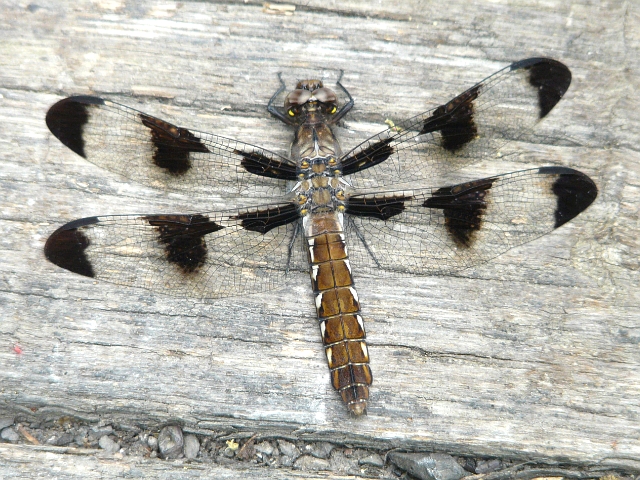
DARNER DRAGONFLIES
They are the largest dragonfly that can grow up to 3 inches long with a wing span of 3.1 inches. They are found near lakes, creeks, and rivers. Some varieties can also live in fields.
Darners can usually be found hovering and catching other insects near water areas such as ponds, lakes and streams; you can find some over fields also. When food availability is abundant, they can be seen hunting in swarms. They are large and fast fliers that come in gorgeous metallic colours ranging from brilliant blues and greens to browns with clear wings. Females can be green or brown, or purple. What do Darner dragonflies eat? To feed themselves, they prey on many flying insects, such as flies, gnats, moths, butterflies, mayflies, damselflies, mosquitoes, and even smaller dragonflies.
What do dragonflies eat from plant
No, they do not eat plants; they are completely carnivorous insects. They prefer eating a variety of insects available in their residing environment; like other insects, they don’t get attracted to pollen or nectars however they can be found near plants looking for their meals, hiding from birds and resting.
Do dragonflies eat fruits?
Dragonflies are exclusively carnivorous; they don’t hover over fruits, but yes, they can be found in fruits preying for the insects; mosquitos, gnats and flies are often found near fruits.
Do dragonflies eat worms?
Dragonflies, when in the stage of a nymph, when they are in water, survive on whatever is in their hunting zone that includes worms, mosquito larvae, other aquatic insects, tadpoles, tiny fish, and other aquatic creatures.
Do dragonflies eat ants?
They prefer eating maid air insects such as mosquitoes, flying ants, grasshoppers, butterflies and flies, while in the larval stage of five years, they eat whatever comes near them, even small fish, tadpoles and aquatic insects.
Do dragonflies eat bees?
Yes, they can eat bees; they have a strong potential for eating meat and won’t spare any insect that comes their way honey bees are also one in the list; dragonflies devour them mercilessly with their strong jaws and sharp teeth and gladly enjoy the meat.
Do dragonflies eat butterflies?
Adult dragonflies are ferocious predators; they are agile fliers and eat any insect they find; even butterflies are on their menu; beetles, moths and mosquitoes are easily caught mid-air by dragonflies.
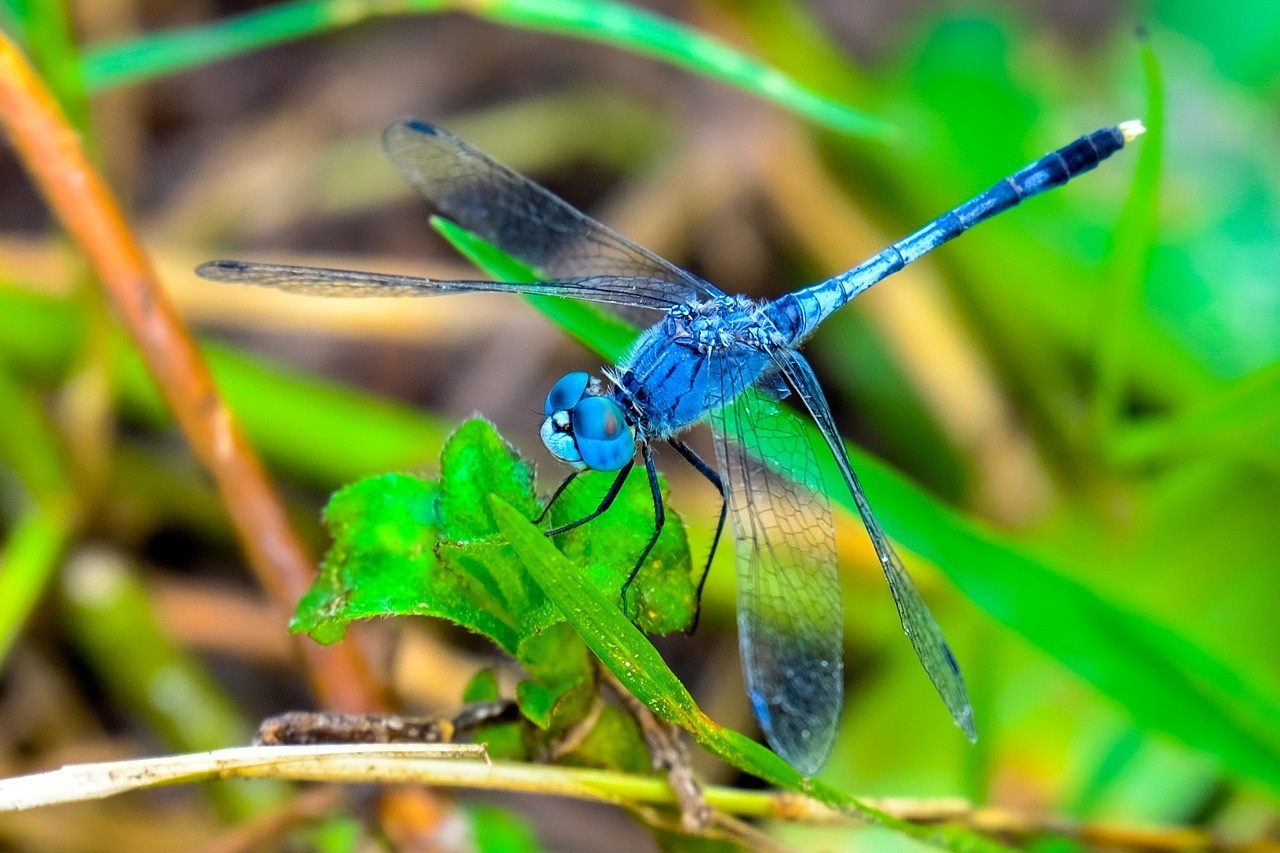
Do dragonflies eat spiders?
All dragonflies are extreme predators; they have been on top of the ecosystem, Asian dragonflies prefer feasting on spiders; they can catch it directly from the web.
Dragonflies are amazing insectivores with no issues with humans surviving lonely hunting insects; let’s learn some amazing facts about this gorgeous creature:
You will be amazed to know that there are more than 5,000 species of dragonflies in the world. About 130 species have been spotted in Ontario.
Green Darner is one of the most popular species and can be recognised easily with its bright green thorax. They are found near ponds, lakes and wetlands in Ontario.
Dragonflies are quick fliers and hard to catch, which makes it difficult to conduct tagging or transmitter programs.
Dragonflies have nearly 360-degree vision. They’re amazing fliers with two sets of wings so they can fly straight up or down, go backwards, fly upside down and hover.
Dragonflies don’t have teeth but can bite if they belong to the order Odonata, which means “toothed,” dragonflies don’t have teeth. Like other insects, they have sharp mandibles on their jaws used for tearing and eating prey. Their bite isn’t dangerous for humans, but it can definitely pinch!
Dragonflies have two wide eyes that contain nearly 24,000 lenses called ommatidia. Their eyes are so big that they cover the entire head, allowing it to see 360 degrees around, which allows them to catch their prey and stay safe from a predator.
They are the fastest flying insects in the world and can reach speeds of 335 miles per hour, even faster than the average hummingbird!
They Beat Their Wings Almost 10 Times Slower Than Bees
While dragonflies are the fastest fliers, they don’t get that way by beating their wings more quickly than other insects. Dragonflies beat their wings around 30 times per second. That sounds very fast until you compare that rate to bees (200 times per second) or mosquitoes (800 times per second).
Dragonflies Can Fly Backward, Loop the Loop and Hover in Place
Because dragonflies have a unique two-wing design, they are incredibly aerodynamic. Dragonflies can fly in any direction a helicopter can, including 360-degree turns, hovering in one place and even backwards.
DRAGONFLIES IN THE NYMPH STAGE ARE equally ferocious hunters they eat constantly specially aquatic creatures they can eat baby dragonflies eat, small fish, mosquito larvae, worms and tadpoles.
Adult dragonflies are voracious eaters. They are highly skilled hunters even while flying they loving catching insects that are airborne; they typically hunt and eat in midair. They prey on any insect and catch them with their thin legs or their sharp jaws. They quickly eat their prey and move for the next availability.
Dragonflies are good hunters like other predators such as lions and sharks but they are best at their prey; a dragonfly catches its prey every time with a 95% success rate, whereas lions have 25% and sharks 50%. Aren’t you amazed at the hunting of such a small creature?
Dragonflies are helpers in disguise; they prefer to eat mosquitoes which are always available in abundance in our ecosystem. If someday you lose all dragonflies, you’d be overrun With Mosquitoes. It also keeps mosquitoes from spreading dangerous diseases to humans.
Dragonflies are good hunters, but they also have aquatic predators; there’s always a smarter one behind you, so you must always watch your back. Pond animals such as fish, swallows, frogs, turtles, spiders, and even larger dragonflies are their predators. The bigger a dragonfly gets, the harder it is to catch, so dragonflies’ hunting skills are even more important as they grow.
Like all insects, dragonflies are cold-blooded, which means they can’t regulate their own body temperature. They keep themselves cool on a hot day by standing in a headstand or “obelisk position.” This reduces the amount of surface area on their body that is exposed to sunlight.
Dragonflies have environmental benefits
Dragonflies are saviours of the environment. They mostly feed on mosquitoes and other insects, so they do an excellent job of reducing mosquito populations around homes. They can feast on hundreds of mosquitoes each day. If you notice an increase in dragonflies around your home, you may also notice a decrease in mosquitoes, horseflies, and other pesky insects.
Dragonflies play a vital role in controlling the mosquito population; they also help reduce the likelihood of getting infectious diseases carried by some mosquitoes, such as malaria, West Nile virus, and dog heartworm. You won’t find any other insect as gentle as dragonflies as you might have heard of the infections and diseases many insects these days seem to be frowned upon.
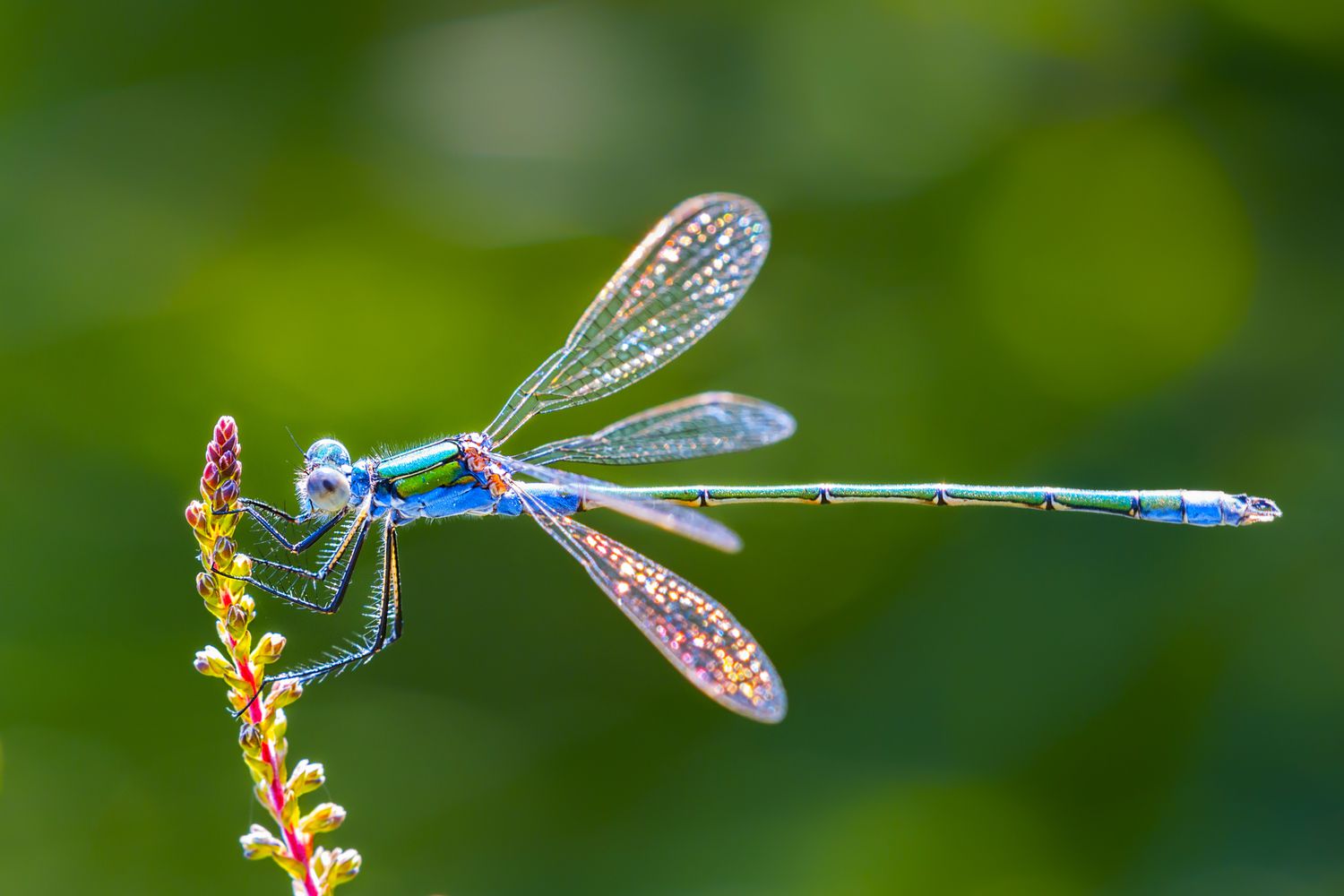
Dragonflies are human-friendly insects they won’t harm you, nor destroy crops, or they bite humans they are silent, lonely creatures. They are fast-flying insects, incredibly manoeuvrable and do an excellent job of naturally controlling the numbers of many unwanted insects, including mosquitoes. Dragonflies are voracious eaters and can consume their own body weight; this means hundreds of mosquitoes a day. You might be thinking dragonfly is a constant eater! What do dragonflies eat? Well, the diet of a dragonfly is not limited to mosquitoes, as they eat other insects, including flies and ants.
Tips To Feed A Dragonfly
It’s not fine to pet dragonflies though they won’t harm you at all they love chasing and gliding in the open areas keeping them pet is confining them they are not meant to be kept as pets, but if you do have a dragonfly as a pet you should make sure you feed them plenty of small flying bugs that they can hunt and catch on their own.
You must follow below-listed tips to feed a dragonfly
- You must lay a water feature in your garden area or in the backyard that has still water, plants around the edges where the dragonflies can perch and breed; you must provide a place for the babies of dragonflies to live. If you want to attract dragonflies to your home so that they can eat the pests that are annoying you, you must make this arrangement.
- You must learn to feed your pet dragonfly properly. To feed a dragonfly that you have in captivity, you should take the time to feed insects that are as close to their natural food fare as possible.
- Make sure you are feeding enough food, the right type of food, and that you are allowing your dragonfly the ability to feed as close to the way they would if they were in nature and they were out eating food in the wild.
Dragonflies are not a threat to the environment but are positive and important environmental indicators. They largely depend on healthy aquatic ecosystems and healthy food chains. If there is any loss to their well-being, it means habitat loss, water and air pollution. Of the 307 species of American dragonflies, many experts agree that roughly 15% of them are critically endangered. Many of these are the species that dwell in small streams and ponds specifically as their ordained habitats.
Dragonflies are not harmful to humans; they have developed their value as a life form on the planet; they serve as ambassadors to the insect world and bioindicators for environmental health; they are beneficial to the environment as they consume insects largely that are harmful to humans.
Dragonflies are insects that predate dinosaurs by over 100 million years and birds by some 150 million. Fortunately, present-day dragonflies are considerably smaller. They are easily recognisable due to their long wings; the “dragon” portion of their name comes from the fierce jaws that they use to catch their flying prey. The “fly” portion of their name is because they are the world’s fastest insects, capable of reaching speeds of up to 60 mph.
Dragonflies prefer eating mosquitos; it is their favourite food. If you ever see many dragonflies attracted to your garden, you will see a decrease in the number of harmful insects and bugs in your garden in only a few weeks. The population of dragonflies are good hunters, and they are mostly harmless. These flies are generally found around wetlands and have sparkling wings and beautiful colours. They serve as a guard to protect crops and plantations from harmful pests and are a great boon to the environment.

